If you’ve ever tasted the buttery crunch of a macadamia nut, you’ve likely wondered: Can I grow this at home? The good news is — yes, you absolutely can! Growing macadamia nuts at home isn’t as difficult as it sounds, and once you understand the basic requirements, your backyard (or even a large pot) can turn into a mini macadamia grove. Let’s dive into how to successfully grow, care for, and harvest your very own macadamia nuts — right from home.
1. Understanding the Macadamia Tree
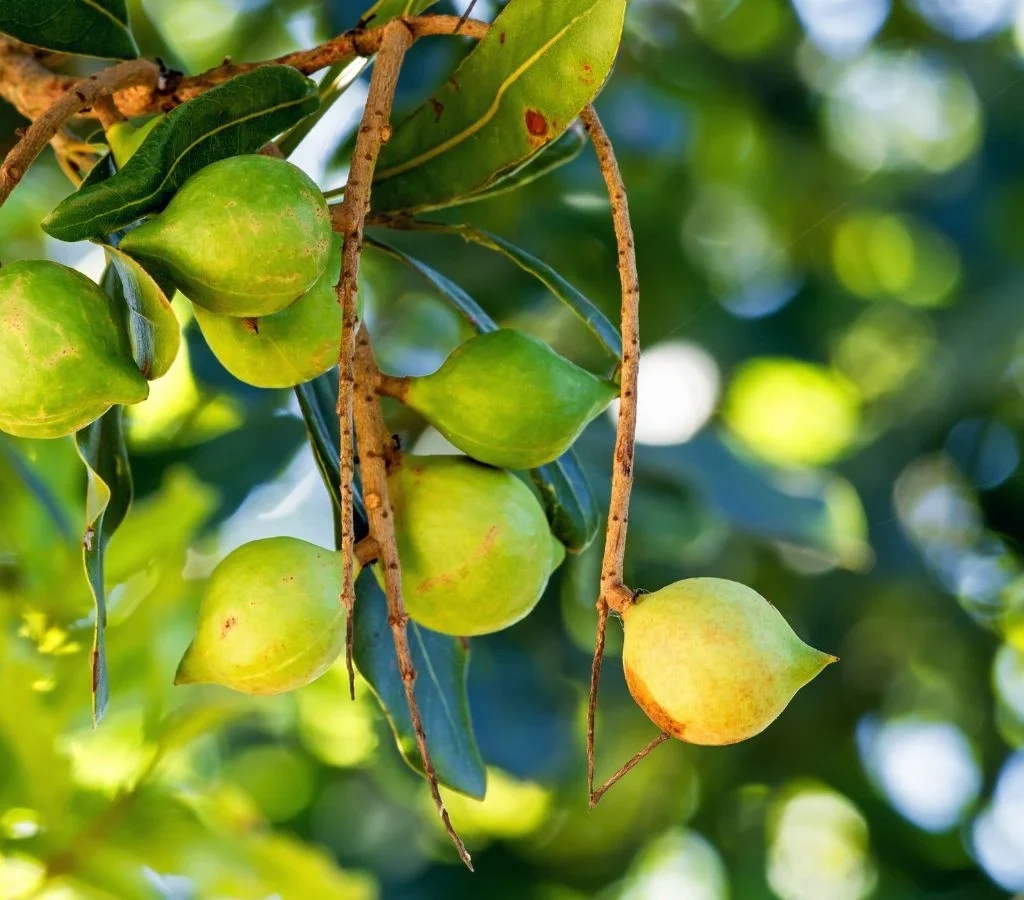
Macadamia nuts come from evergreen trees native to the subtropical rainforests of Australia. Today, they are cultivated worldwide in warm climates, from Hawaii to South Africa and southern India.
There are two main species grown for nut production:
- Macadamia integrifolia – Produces smooth-shelled nuts; ideal for home gardens.
- Macadamia tetraphylla – Produces rough-shelled nuts; more cold-tolerant.
These trees can grow up to 30–40 feet tall in nature, but with pruning and container management, you can easily grow them as compact trees or even in large pots.
2. Choosing the Right Variety
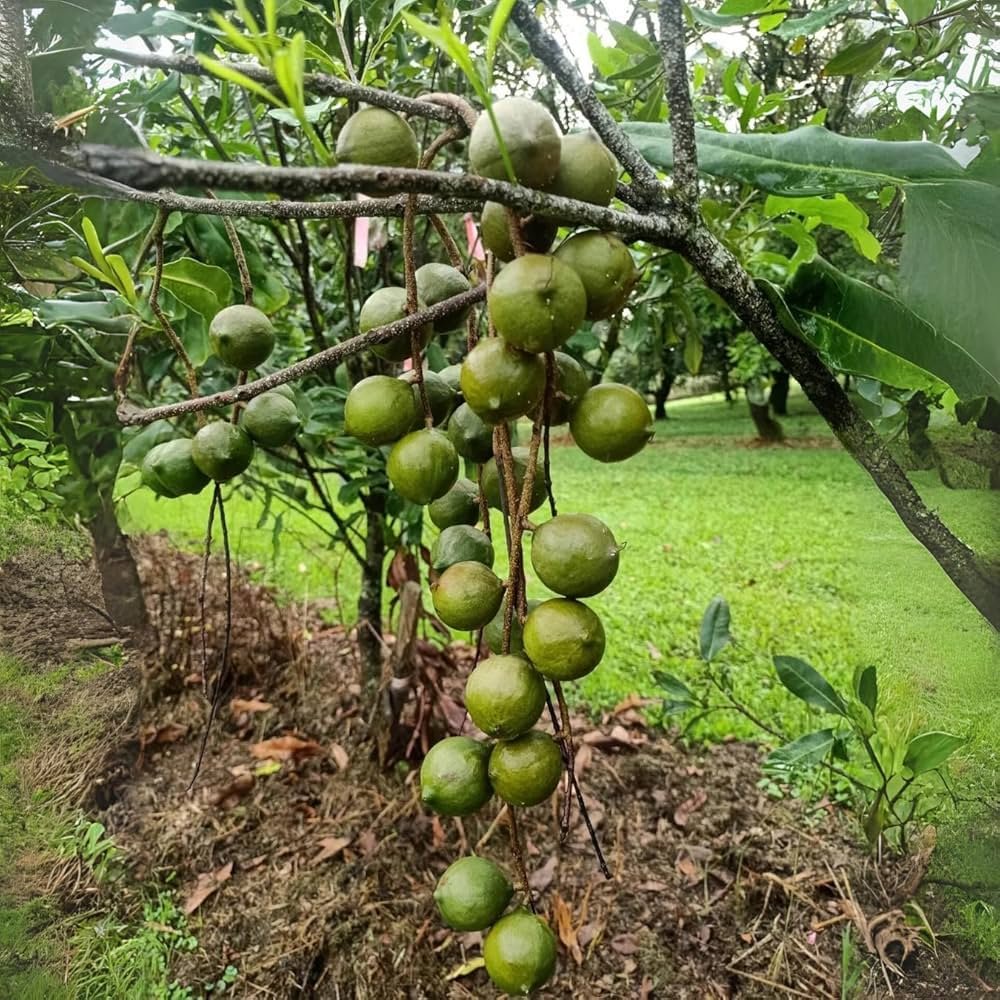
When growing at home, it’s best to start with a grafted macadamia plant rather than seeds. Grafted trees bear fruit faster (within 3–4 years), while seed-grown trees can take 7–10 years to mature.
Some excellent home-growing varieties include:
- ‘Beaumont’ – A hybrid variety known for reliability and ease of care.
- ‘Cate’ – Early-bearing and hardy; suitable for subtropical regions.
- ‘Dorado’ – Compact and productive, perfect for small spaces or container growing.
If you live in an area with mild winters (no frost below 2°C / 35°F), you can grow macadamias outdoors year-round. For cooler regions, container growing is ideal, as it allows you to move the plant indoors during cold months.
3. Growing Macadamia Nuts in Containers
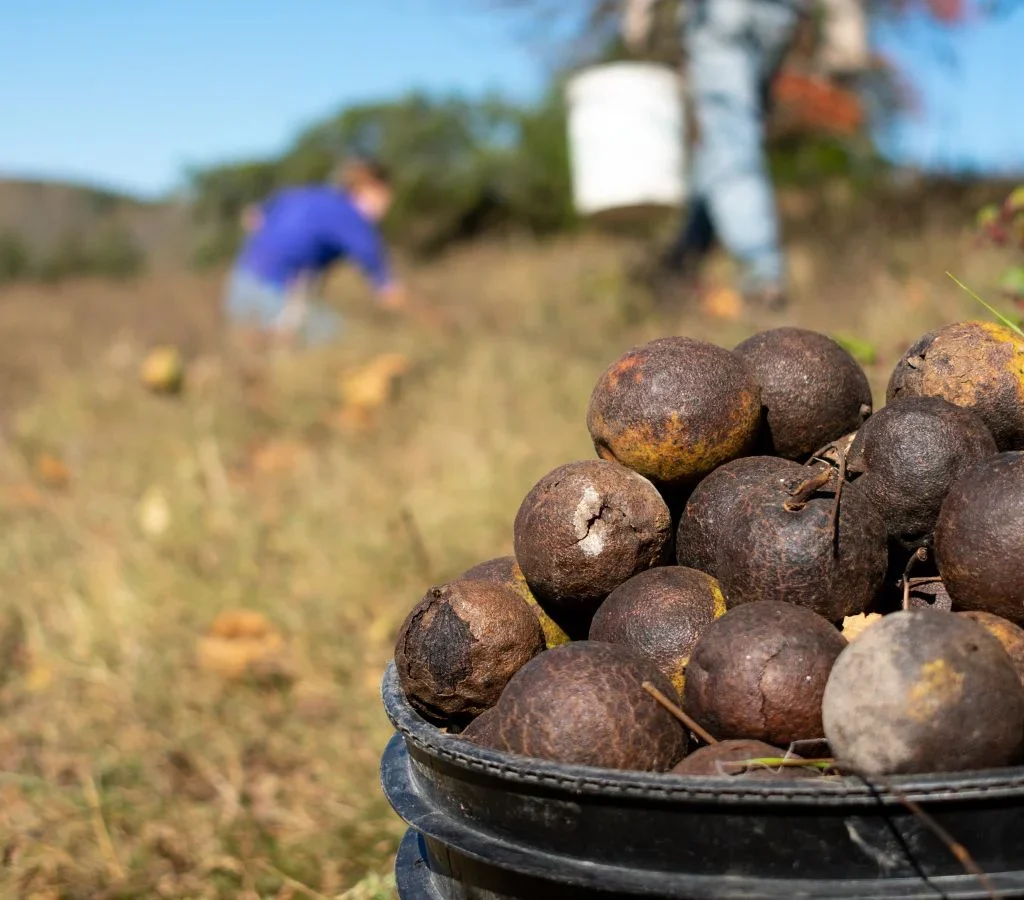
Macadamias can thrive in large pots, provided they have proper soil, space, and drainage. Here’s how to set them up for success:
Container Selection
Choose a pot at least 24–30 inches wide and deep, with multiple drainage holes. The root system of a macadamia tree is extensive, so give it plenty of room to expand.
Soil Mix
Macadamias prefer slightly acidic, well-draining soil. A perfect potting mix includes:
- 40% garden loam or compost
- 30% perlite or coarse sand
- 30% coco peat or pine bark
This combination ensures aeration and prevents waterlogging — a common cause of root rot.
Planting Steps
- Fill the container with the prepared mix.
- Place the macadamia seedling or grafted plant in the center.
- Firmly press soil around the roots.
- Water deeply after planting.
Position the pot in a sunny location — at least 6–8 hours of direct sunlight daily is essential for healthy growth.
4. Watering and Fertilization
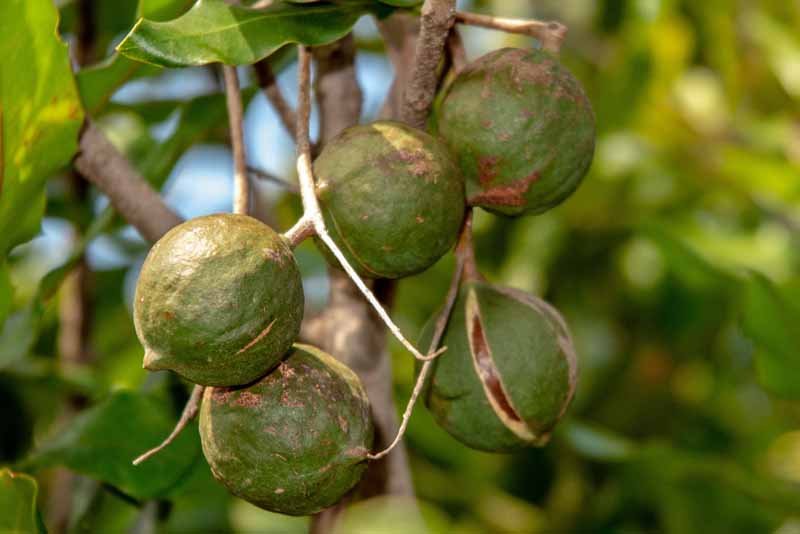
Macadamia trees need consistent moisture, especially during their growing and flowering stages.
- Watering: Keep the soil slightly moist but never soggy. Deep watering once or twice a week is ideal. During dry or windy weather, increase frequency.
- Fertilization: Use a balanced, slow-release fertilizer (such as 10-10-10 NPK) during the growing season. Supplement with iron, zinc, and magnesium to promote healthy foliage and nut production.
- Mulching: Apply organic mulch around the base to retain moisture and suppress weeds.
Avoid over-fertilizing, as excess nitrogen encourages leafy growth at the expense of nuts.
5. Pruning and Maintenance
Regular pruning helps your macadamia stay compact and manageable. Here’s how:
- Prune lightly each year to remove dead, crowded, or weak branches.
- Maintain an open canopy so sunlight can reach all parts of the tree.
- In containers, keep your tree at 5–7 feet tall for easy care and harvesting.
Inspect regularly for pests like aphids, scale insects, and macadamia nut borers. Neem oil or insecticidal soap can help control them naturally.
6. Pollination and Flowering
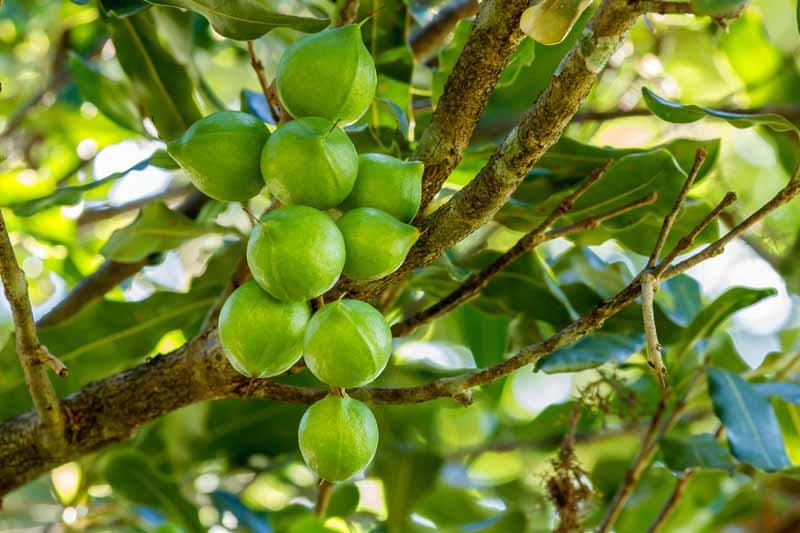
Macadamia trees are self-pollinating, but cross-pollination with another macadamia nearby often improves yield.
The tree produces long racemes of small, creamy-white flowers, which appear in late winter to early spring. These flowers develop into clusters of nuts that take several months to mature. Bees and other pollinators play a vital role in nut formation, so a pollinator-friendly garden boosts productivity.
7. When and How to Harvest Macadamia Nuts
Patience is key when growing macadamia nuts — but the reward is worth it!
You’ll know it’s harvest time when:
- Nuts fall naturally from the tree, usually 6–8 months after flowering.
- The outer green husk splits open, revealing a hard brown shell inside.
Collect the fallen nuts, remove the husks, and allow the shells to dry for a few weeks in a shaded, airy area. Once dry, crack the shell carefully to reveal the delicious, creamy kernel inside.
(Tip: The shells are extremely hard — use a nutcracker designed for macadamias or a vise clamp.)
8. Curing and Storing Your Harvest
Proper curing improves flavor and texture:
- Spread dehusked nuts in a single layer.
- Air dry them for 2–3 weeks.
- Once dried, roast lightly at 100–120°C (212–248°F) for 10–15 minutes to enhance taste.
Store roasted or raw nuts in airtight containers away from moisture. Refrigeration extends shelf life and preserves their delicate flavor.
9. Common Problems and Solutions
| Problem | Cause | Solution |
|---|---|---|
| Yellow leaves | Overwatering or poor drainage | Improve soil aeration; reduce watering |
| Few or no nuts | Lack of pollination or nutrient imbalance | Add another macadamia tree; fertilize properly |
| Nuts falling early | Water stress | Maintain consistent moisture |
| Pests (scale, aphids) | Poor air circulation | Prune and use neem oil spray |
10. Benefits of Growing Macadamias at Home
Growing macadamia nuts at home isn’t just rewarding — it’s incredibly beneficial:
- Nutrient-Rich Harvest: Macadamias are packed with heart-healthy fats, antioxidants, and minerals.
- Eco-Friendly: Reduce your carbon footprint by growing your own food.
- Low Maintenance: Once established, macadamias require minimal care.
- Long Lifespan: A healthy macadamia tree can live and produce for over 40 years.
Plus, there’s unmatched satisfaction in cracking open your own homegrown nuts — each one a testament to your gardening skill and patience.
11. Final Thoughts
Growing macadamia nuts at home is easier than you think once you understand their basic needs — warmth, sunlight, good drainage, and patience. Whether you plant them in your backyard or grow them in a large container on your patio, macadamias can thrive beautifully and reward you with delicious, buttery nuts for years to come.
So, roll up your sleeves, grab a grafted macadamia seedling, and start your journey toward a sustainable and flavorful harvest. With the right care and a little time, you’ll soon be enjoying homegrown macadamias — the ultimate nut lover’s dream come true!

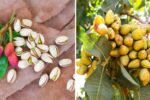
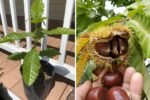
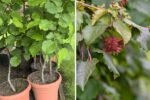
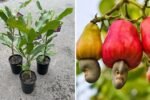

Leave A Comment